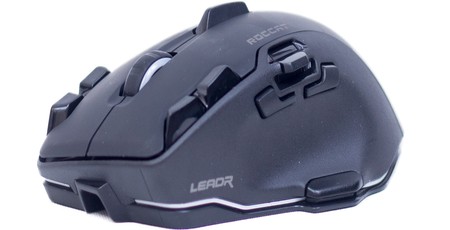
Manufacturer: Roccat
UK price (as reviewed): £129.95 (inc. VAT)
US price (as reviewed): $139.99 (exc. tax)
Wireless mice have always been behind wired mice when it comes to gaming, but recently things have started to catch up. There is far less latency, battery life is increasing, and sensor quality is high. It does, of course, come at a price, but it seems people are now a lot happier going wire-free.
Roccat has seen the trend and decided to follow with the new Roccat Leadr (the irony that the 'Leadr' is following the others isn't lost on us). The Leadr is essentially a wireless Roccat Tyon, but is it actually any good? Let's find out.
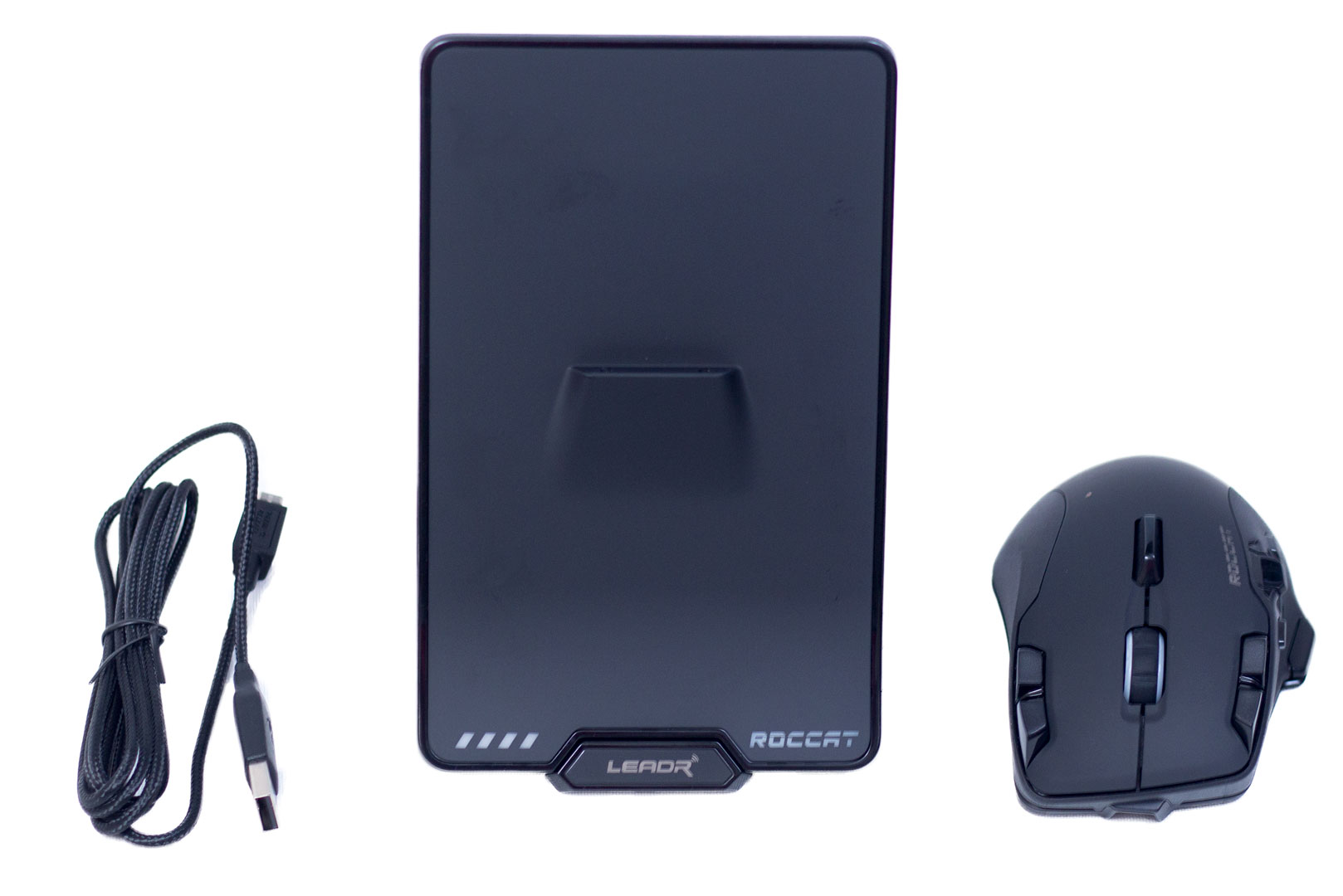
Inside the box, there is the mouse, a micro-USB cable, and a huge charging station that also doubles up as the wireless dongle. There is also a manual and some Roccat stickers included in the box as per usual.
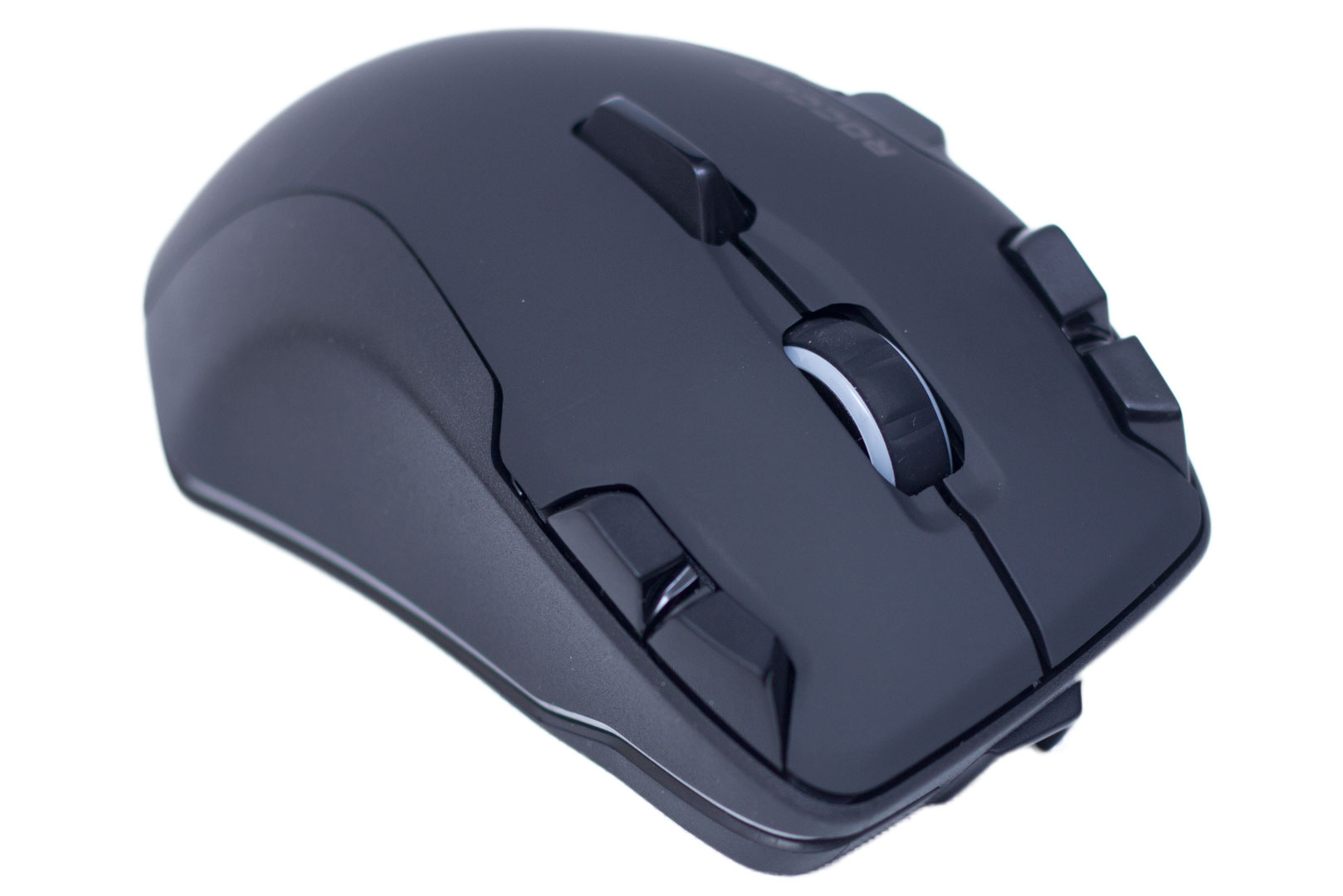
The mouse itself has multiple buttons; in fact, they are everywhere. You have the usual left and right mouse buttons along with the scroll wheel, but there are also five more buttons on the top. By default, the two extra buttons on the left control the DPI and the two on the right change the mouse profile. The centred button offers left/right tilt functionality that's sometimes found on scroll wheels but here is separated.
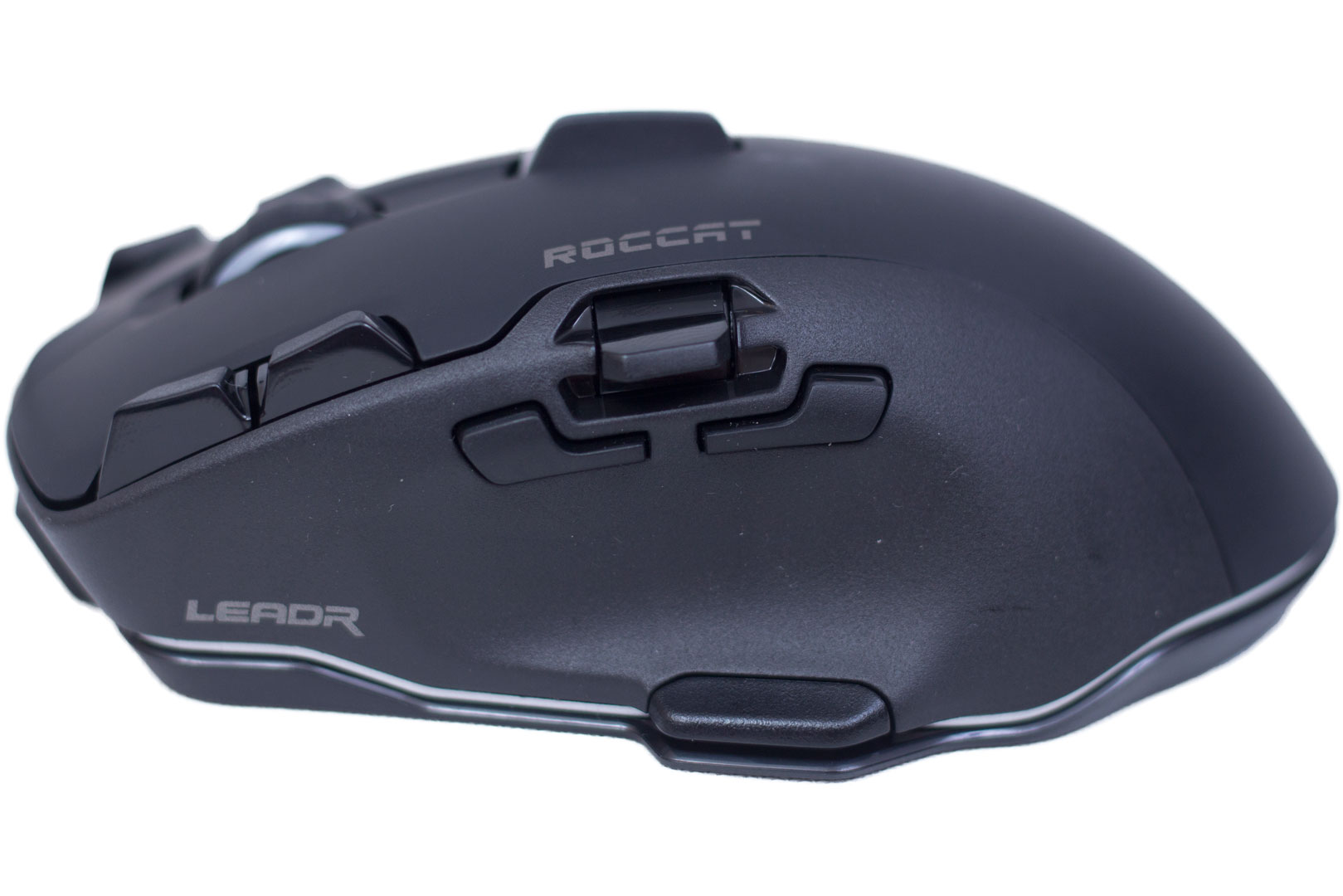
The buttons don't stop there! There are even more on the left side for your thumb to play with. Here you have the usual forwards and backwards buttons, but there is also a paddle which can be used for scrolling up and down. Finally, there is a button towards the bottom of the mouse. This button is great and by default is set to Roccat's EasyShift function. This is probably my favourite feature of the mouse. As the name suggests, it effectively replicates the Shift key function of your keyboard such that when it is pressed all of the buttons have secondary actions. For example, EasyShift + scroll wheel controls the volume on your computer; EasyShift + button 8 mutes the volume. These can all be programmed through the software, and the possibilities are virtually endless given just how many buttons there are even before EasyShift is considered.
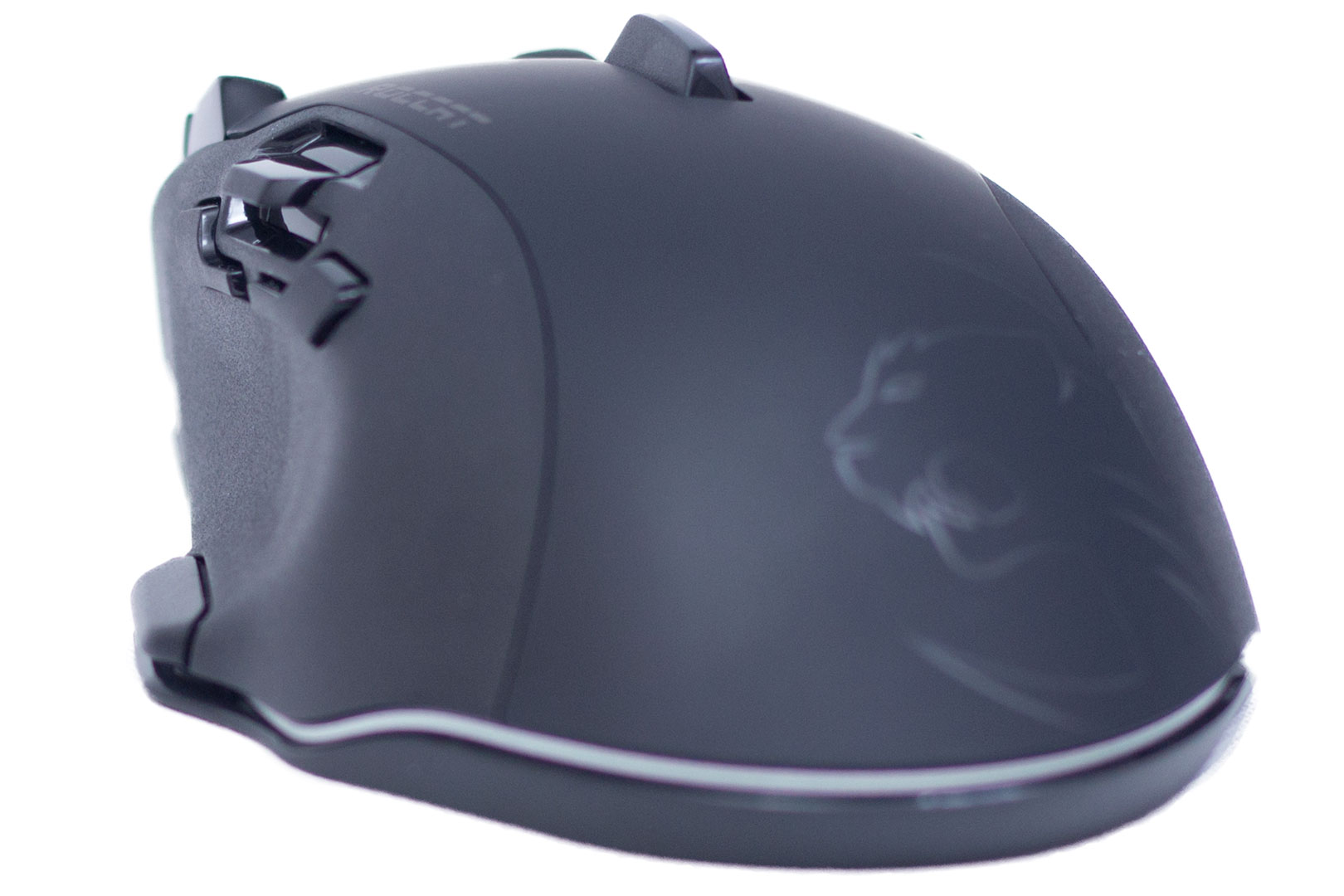
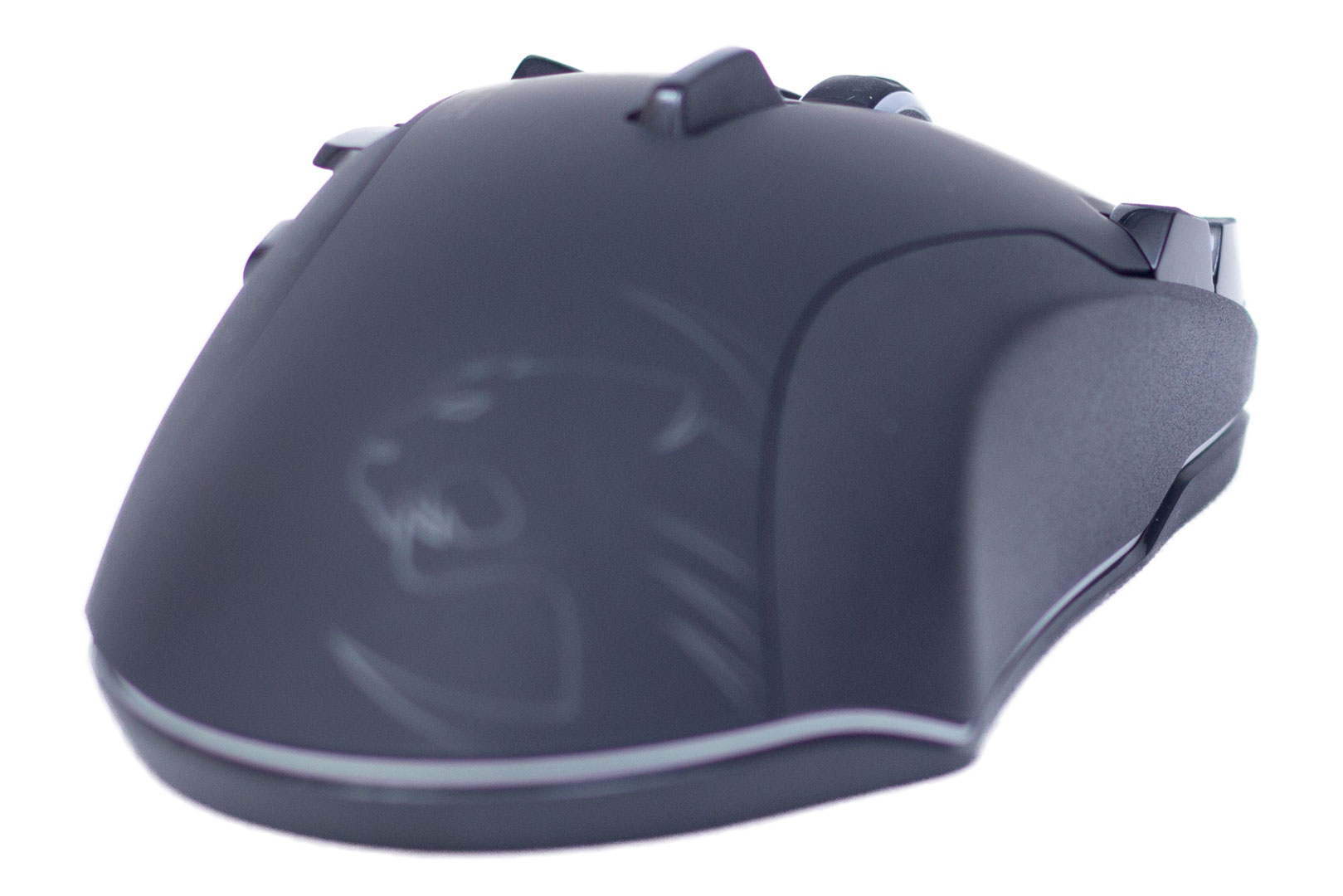
The sides of the mouse are contoured so that your hand fits as comfortably as possible. As someone with small hands, large mice like this are generally uncomfortable to use. However, I have had no problems with the Leadr; in fact, once I got used to it, it was very comfortable indeed.
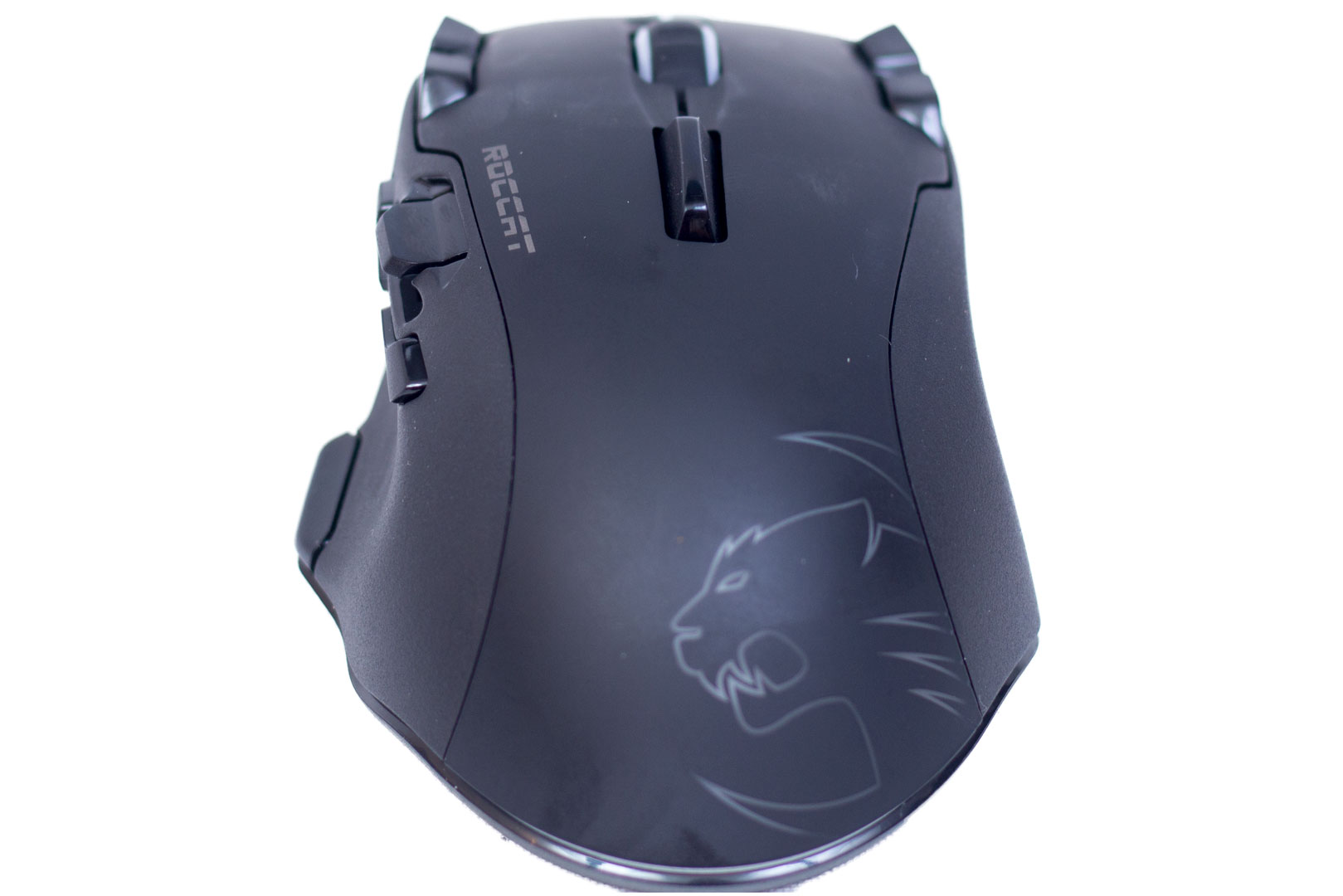
The rear of the mouse is rather bulbous but isn't too high for a palm grip. Both fingertip and claw grips are fine with this mouse too, although it may take a little longer to get used to the button setup.
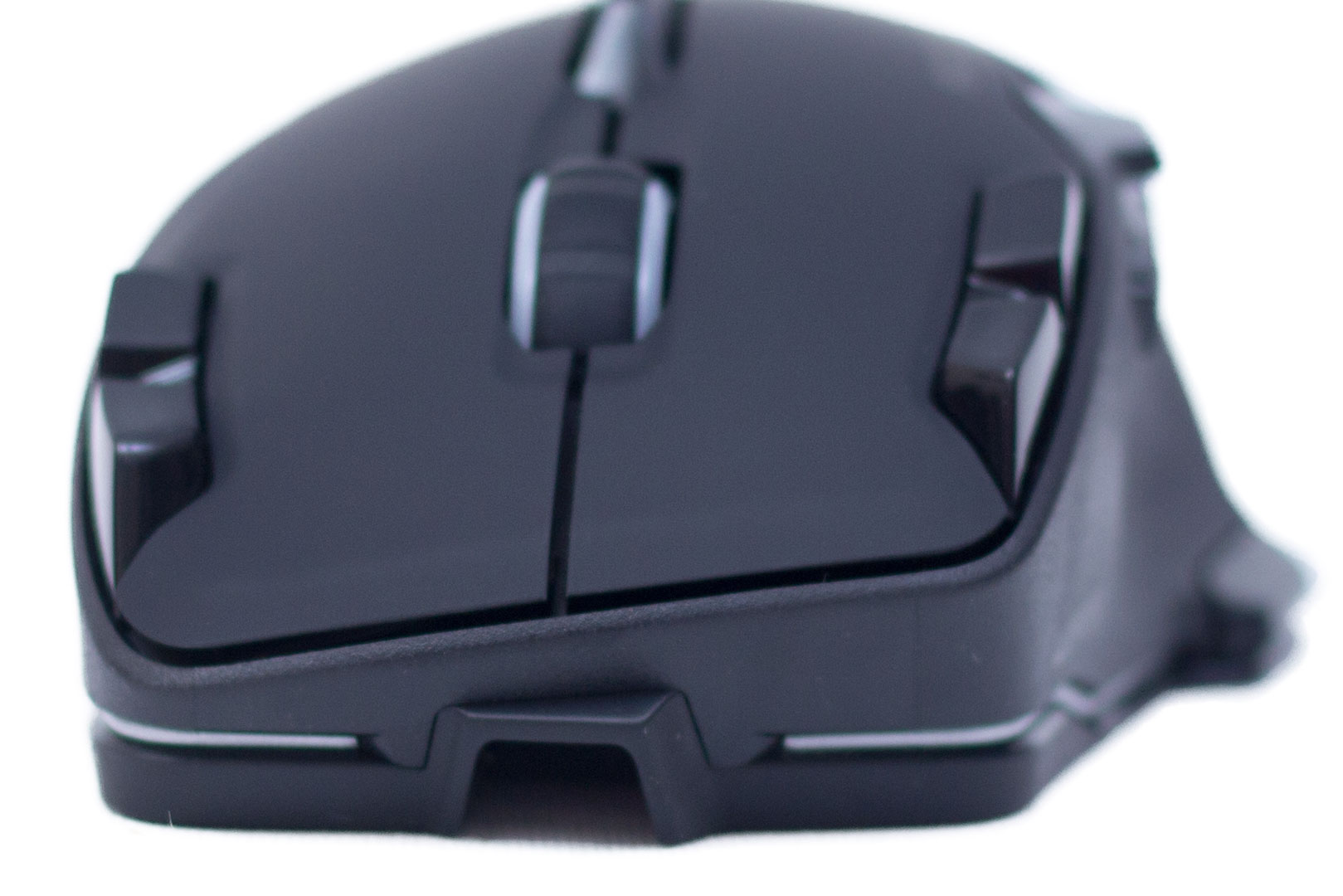
From the front, you can clearly see the downwards slant to the right (as you hold it). This helps your wrist to stay in a comfortable position. There is also a space for the charging cable if you find that the battery dies before you are ready to put it on the dock.
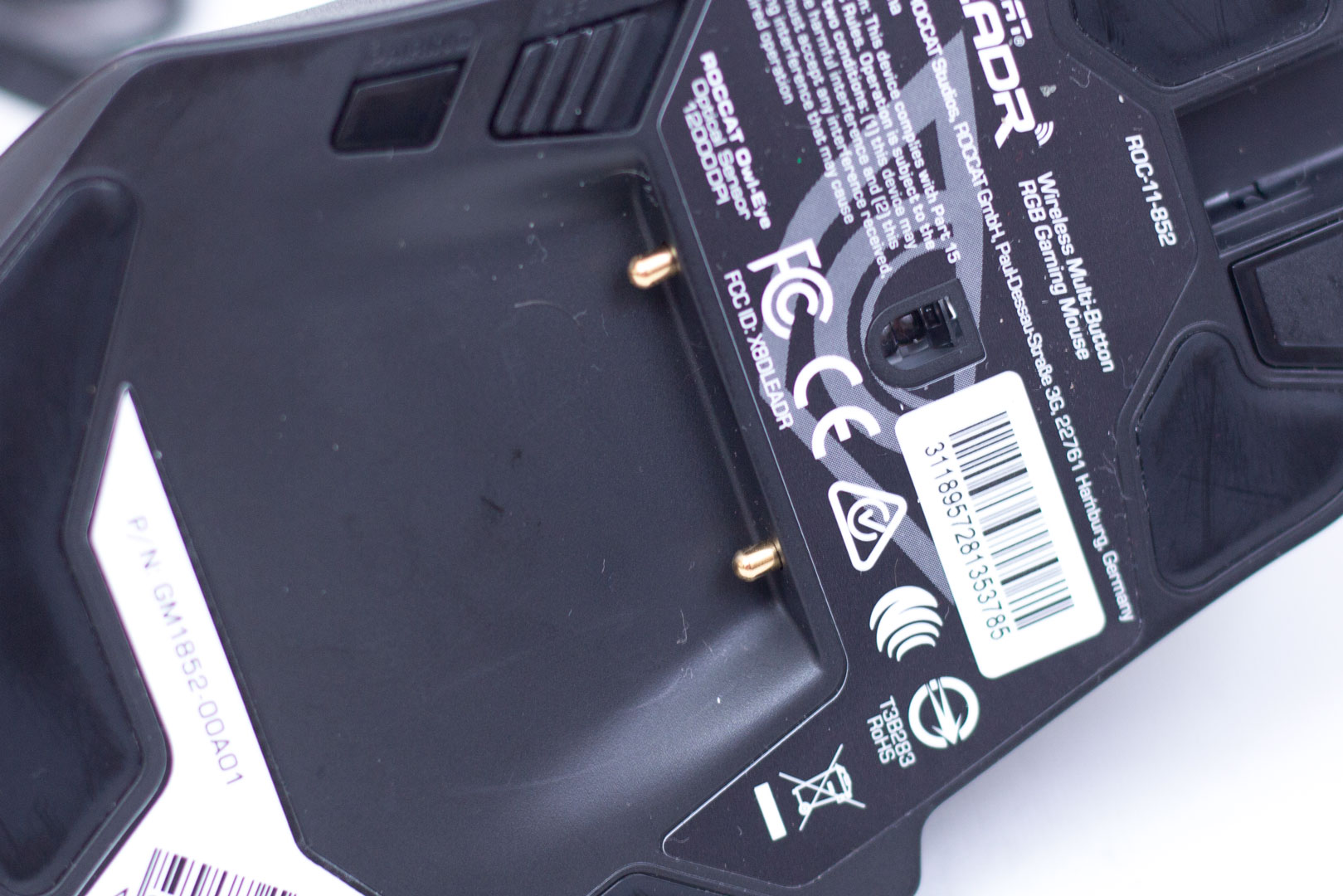
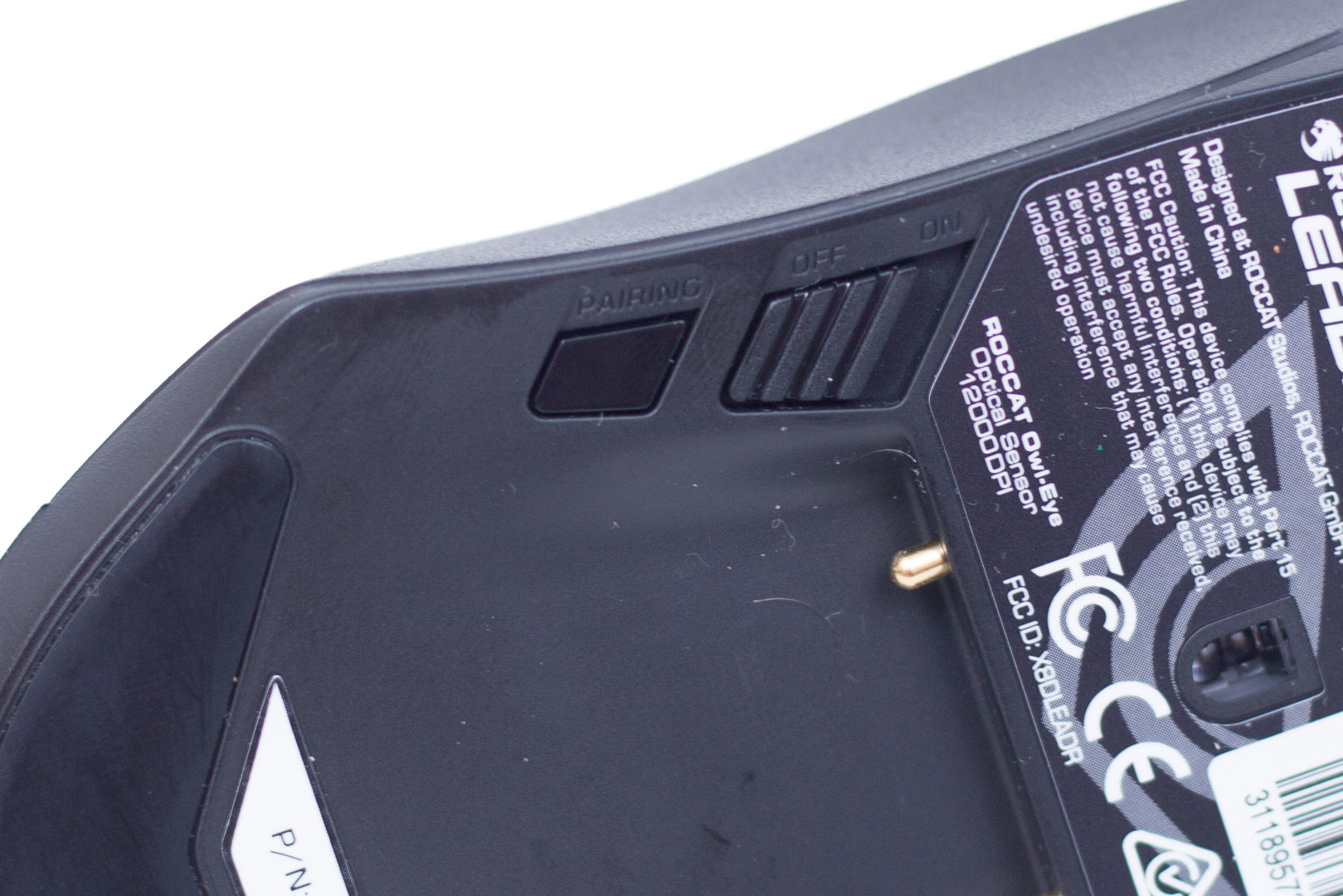
Turning the mouse over reveals yet more buttons along with the contacts for the charging dock. The two buttons are nice and simple; one turns the mouse off, and the other is for pairing the device with the dock if it should ever lose connection. I can only assume this works, but my sample never lost connectivity for me to test it.
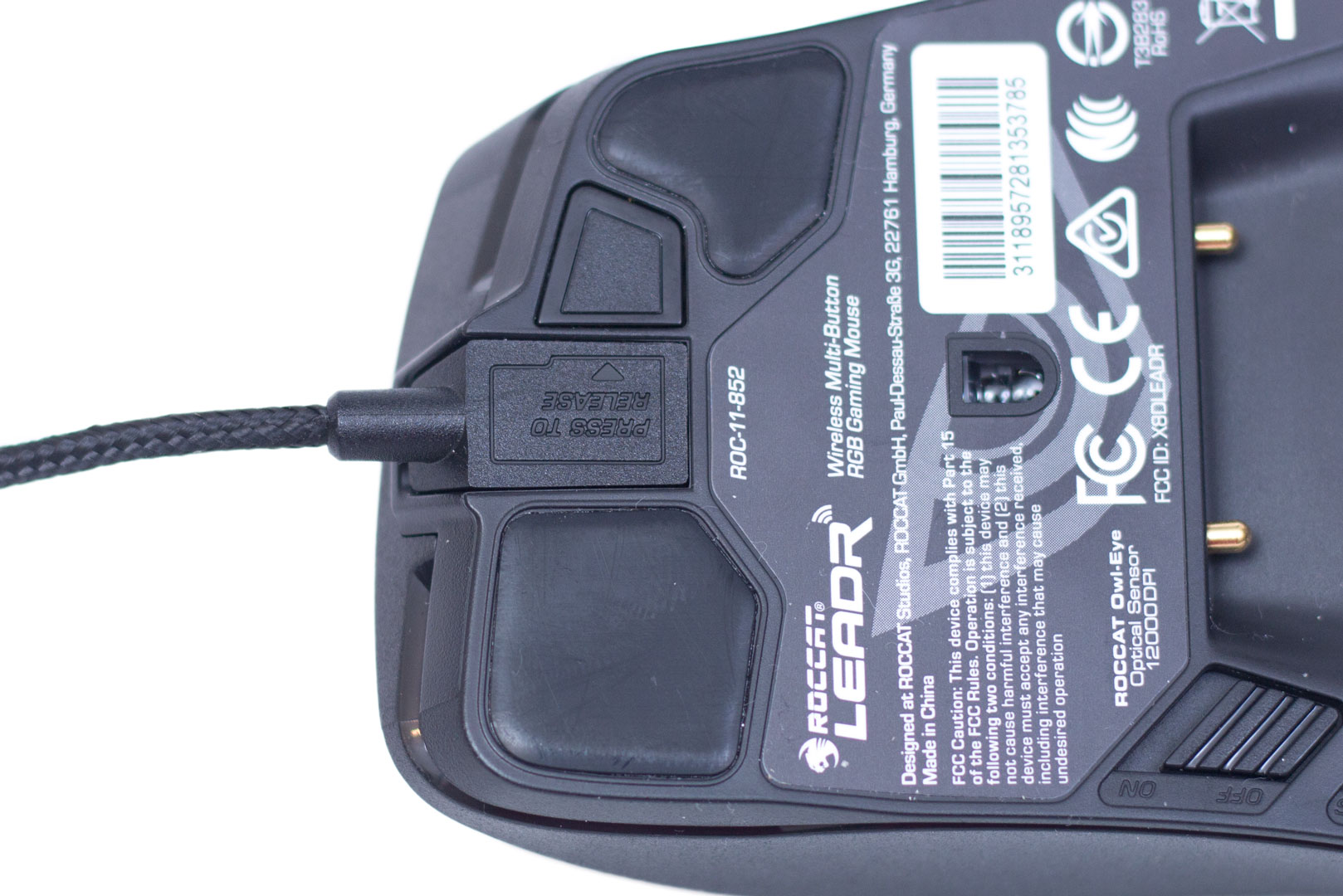
As already mentioned, you are able to use the charging cable with the mouse directly. Using the cable with the mouse is a little bit trickier than it needs to be, as you have to use the cable that plugs into the dock. This isn't a massive issue, but removing the cable takes quite a lot of pulling, and over time we can see this damaging something. It would have been far easier to have a small cable protruding from behind the dock going straight to the mouse so that it can be grabbed quickly without any need to unplug anything. You can also see the sensor; this is a Pixart 3361, which is simply a tweaked 3360. This is a fantastic sensor and quite honestly one of the best we have used. It tracks well and works on most surfaces.
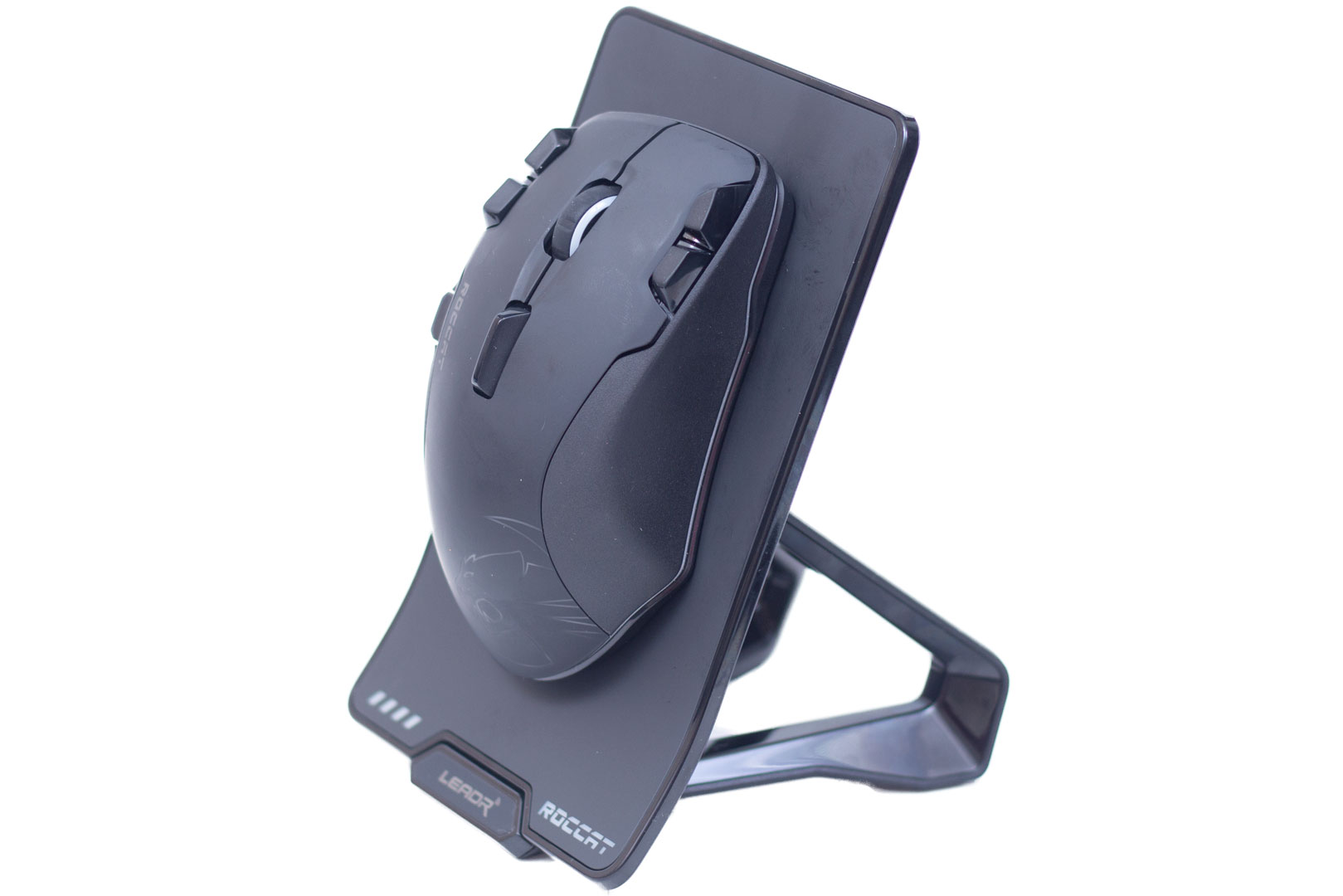
The mouse does look great on the dock, and it becomes a centrepiece on your desk. The biggest problem, however, is that the charging dock is rather large and takes up a lot of desk real estate. If you have a small desk, this could be a problem. Having said that, the wireless reach is large enough that you could actually put the dock somewhere else if needs be, as long as the USB cable reaches your computer.
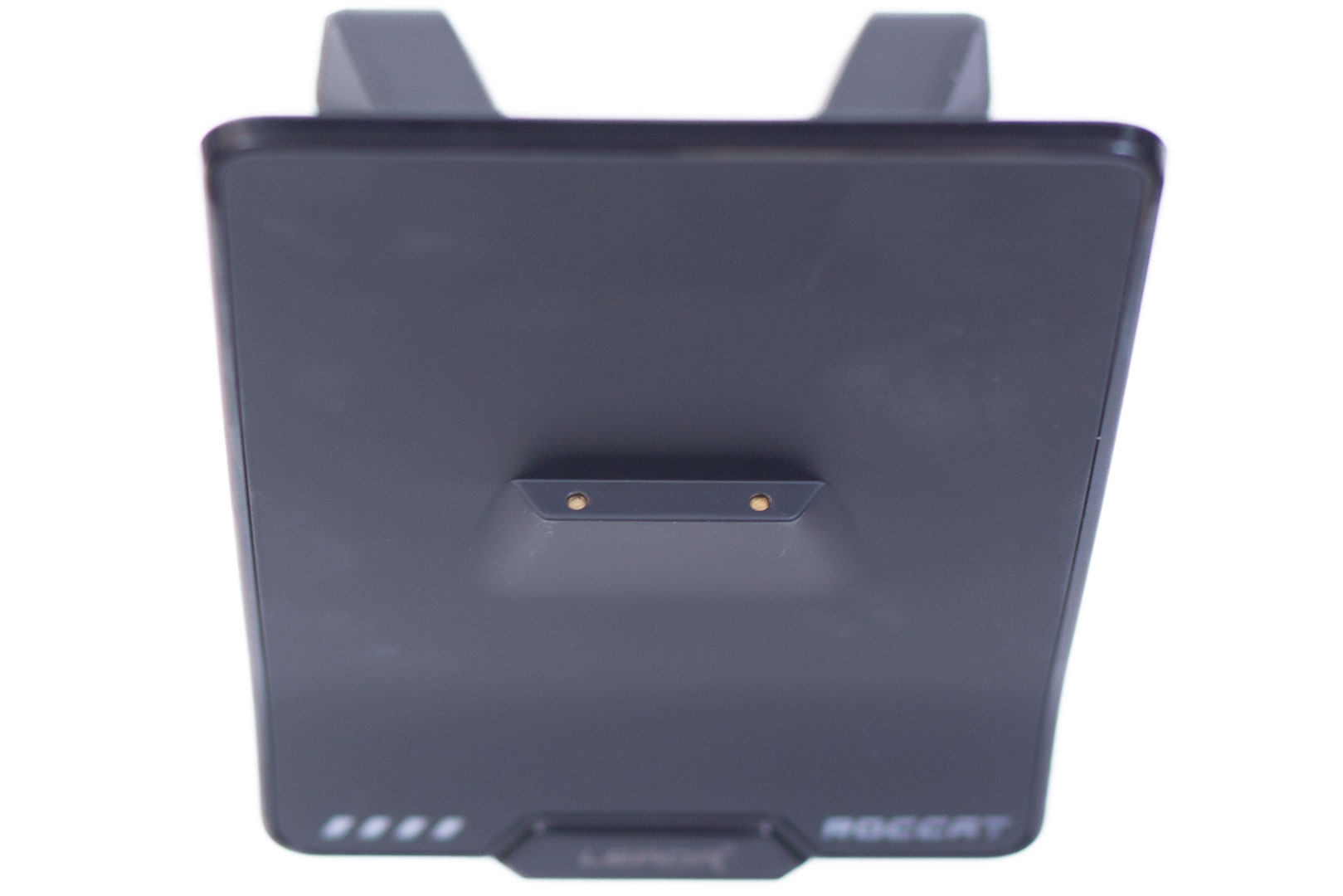
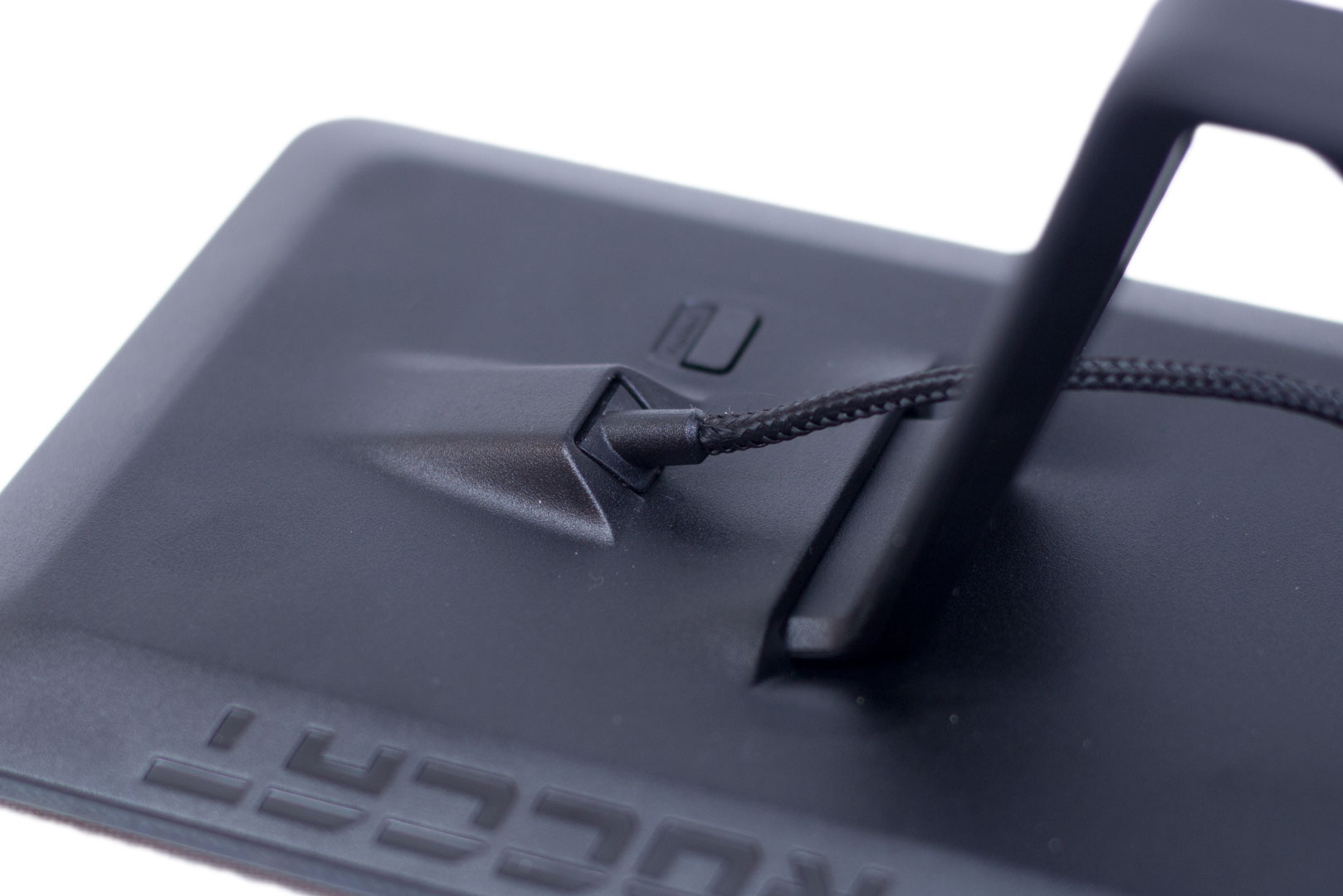
The dock uses two contacts to charge the mouse and has a display to show charging status. On the rear of the dock, there's the connector for the cable and also a pairing button.
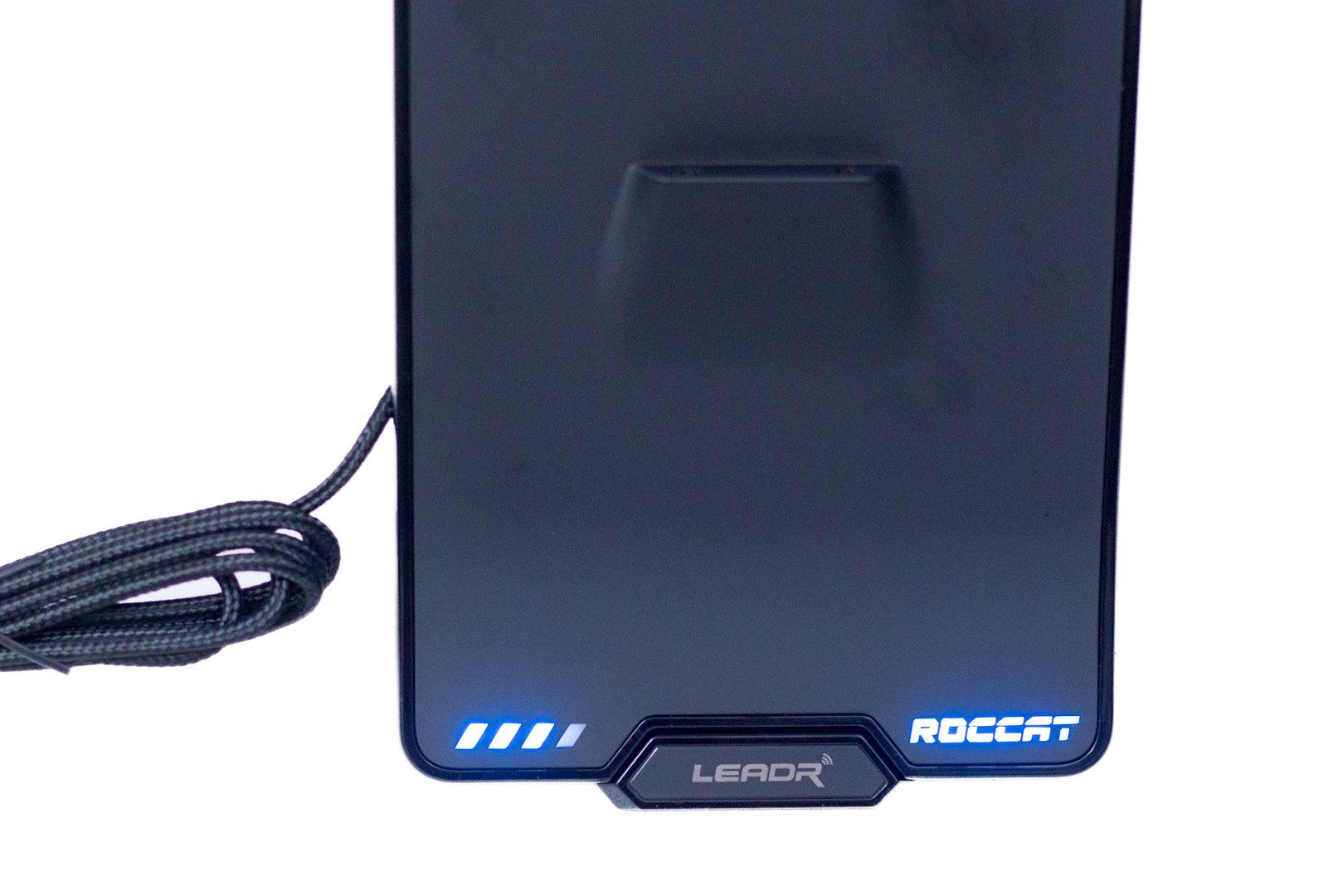
When plugged in, the LEDs come to life, illuminating the logo and charge level indicator. I found the battery life to be just under 20 hours, but other than this crude display, there is no way of finding out what battery level you are on. It isn't in the software anywhere, and the last LED on the docking station seems to last longer than the first three, so the only way you know you are on very low battery is when the mouse battery dies. It would be nice to have the battery level shown somewhere in more precise terms.
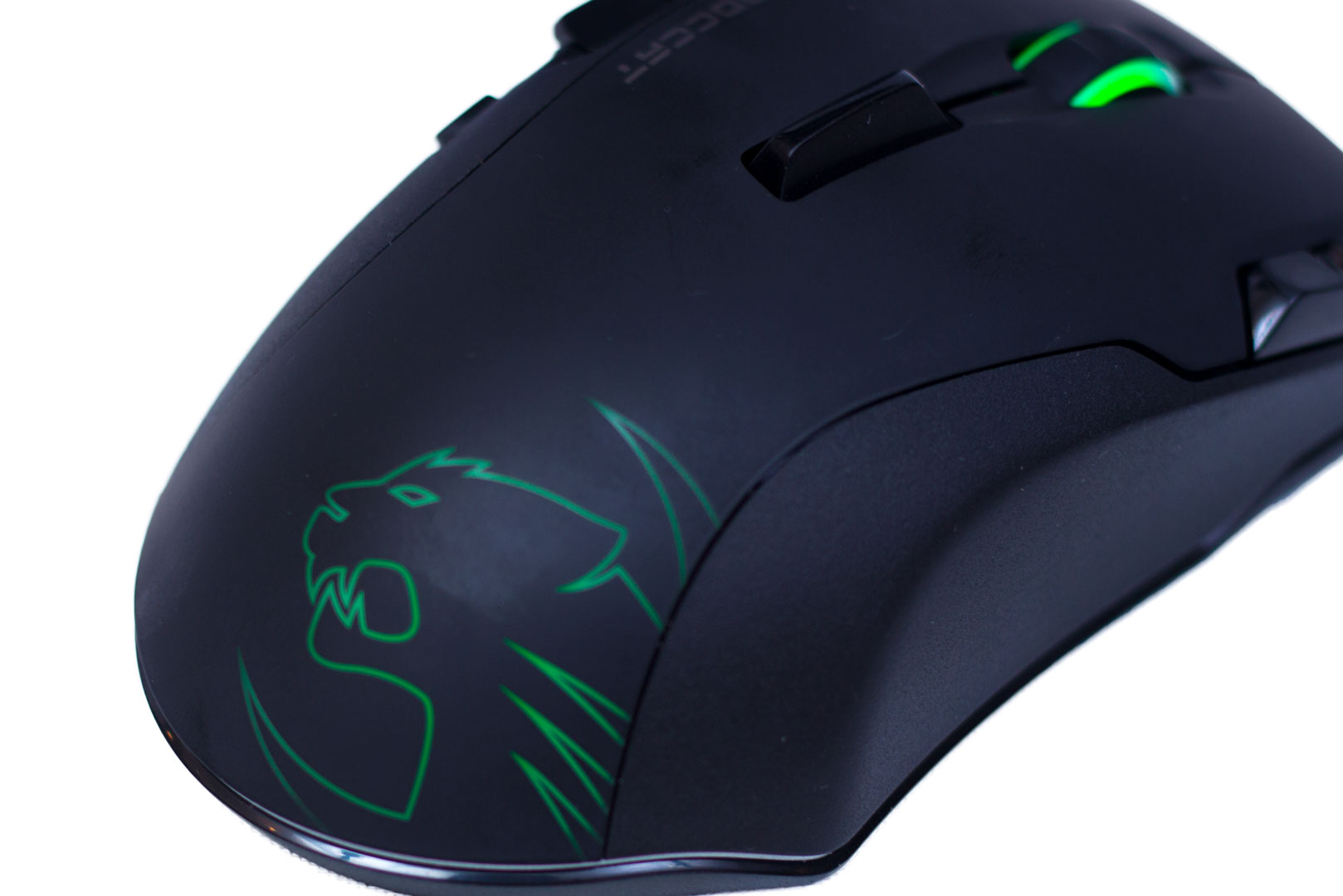
The
RGB LEDs on the mouse are not so 'in your face' as some other mice. It
is actually quite nice to see something a little more subtle. As is the
norm now, you can change the colours to whatever you like.

MSI MPG Velox 100R Chassis Review
October 14 2021 | 15:04

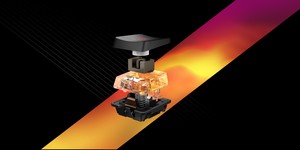
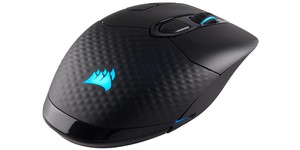
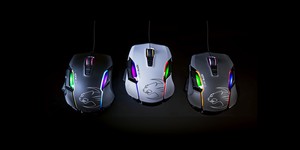




Want to comment? Please log in.